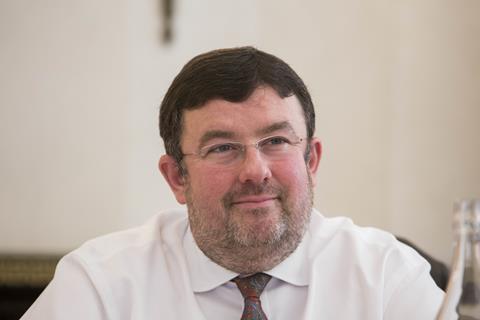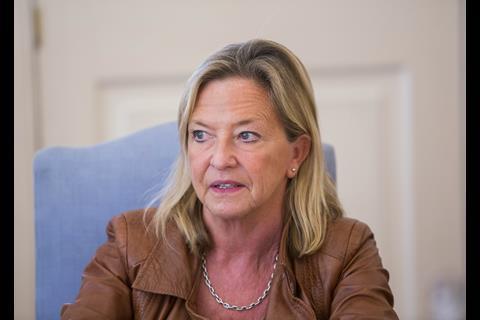Foundation status was a benchmark for excellence – but the financial crisis has hit hard. Alison Moore on a debate over what the FT model still has to offer and where it goes from here
When foundation trusts were first set up, to become one was a mark of status in the NHS, offering additional freedoms.
But the financial crisis has seen foundation trusts suffer as much as other NHS organisations with many predicting substantial deficits this year, and having to make tough decisions about savings. A number have been put into special measures by their regulator Monitor – either because they had critical Care Quality Commission reports or were facing severe financial problems, or both.
‘There has been huge change in the context that foundation trusts operate in in the last year’
Meanwhile, health secretary Jeremy Hunt has suggested that achieving a good or outstanding rating from the CQC is the “single definition of success” and a mark of quality for trusts, rather than becoming a foundation trust.
An HSJ roundtable, sponsored by Newton Europe, looked at whether foundation trust status means anything in this new NHS climate and asked if foundation trusts today are better equipped to develop a sustainable future than other NHS organisations.
Roundtable participants
Crispin Dowler HSJ bureau chief, covering providers and finance (roundtable chair)
Paul Briddock director of policy, Healthcare Financial Management Association
Mark Davies interim chief executive, Norfolk and Norwich University Hospitals Foundation Trust
Chris Hopson chief executive, NHS Providers
Claire Murdoch chief executive, Central and North West London Foundation Trust
Adam Sewell-Jones director of provider sustainability, Monitor
Jenny Simpson senior adviser, Newton Europe and former president of the Institute of Healthcare Management
Philippa Slinger managing director, secondary care, Care UK and former NHS trust chief executive
Ric Whalley associate director, Newton Europe
Introducing the roundtable HSJ provider bureau chief Crispin Dowler outlined the rapidly changing situation. “There has been huge change in the context that foundation trusts operate in in the last year,” he said. “Huge financial pressure coupled with a heightened emphasis on staffing from the Care Quality Commission has seen the distinction between foundation trusts and the others begin to collapse.”
This had been mirrored in changes in how the centre treated foundation trusts. This had started over last winter when there was huge pressure on performance targets and more recently had been around pressure to address the deficit.
“We have seen a merger in all but legislation of the NHS Trust Development Agency and Monitor. I don’t think we could have had a stronger signal from the centre than that,” he added.
Given all this, Mr Dowler asked, did the foundation trust model have much left to offer individual providers or the system as a whole?
‘I think when the foundation trust idea started it was very much around freedom and aspiration’
Adam Sewell-Jones, director of provider sustainability at Monitor, said in the early days the first wave of foundation trusts were seen as something to aspire to and had freedoms – though whether all had fully made use of those was arguable. But he agreed that distinctions between foundation trusts and others had become blurred and suggested those in high performing non foundation trusts might wonder whether going through the foundation trust pipeline was worth it.
However, he saw some important principles in foundation trust status including that organisations were best run by people who understood them and were local.
He added that a system level focus was also needed to ensure decisions could be made for the good of the local population. “At the moment if you are running an acute hospital and you know that the community and mental health trusts can provide services most effectively the right thing for the local population is to allow them to do so,” he said. However, acute trusts that did that risked slipping into deficit.
“I think when the foundation trust idea started it was very much around freedom and aspiration,” said Newton Europe associate director Ric Whalley. ‘“It gives a real focal point for an organisation to get its stuff in order and to a certain standard.” However, he said this could also happen through a suitably designed CQC-based process.
Some non foundation trusts were as “good” as those who had got foundation status, he added, but overall “the concept of earned autonomy and freedom is right”.
Several of the panellists had experience of leading trusts to foundation trust status. Former chief executive at Heatherwood and Wexham Park Hospitals Foundation Trust Philippa Slinger – who now heads up Care UK’s secondary care side – added: “I loved becoming a foundation trust. I loved the process. It revolutionised the way my organisation ran. It made us think about things in a different way. It made us more efficient.”
“When you are a foundation trust you don’t have to ask permission. I felt the glory of the freedoms of being a foundation trust compared with being a managed trust.”
She questioned whether this could be replicated in some organisational form which was not a foundation trust. Her trust would never have merged with Frimley Park Hospital Foundation Trust had there not been support from governors and managers.
Positives of foundation trust status
Many saw the positives of foundation trust status as lying partly in the membership model and what chief executive of Central and North West London Foundation Trust Claire Murdoch suggested was a sense that “this is our corner of the NHS”. Ms Slinger said: “Sometimes as a chief executive you think it is all a bit of a pain. But if you use it properly it helps you move mountains which you could not do.
“With transformational change, if you harness this relationship properly you are going to get that weight that sways the overview and scrutiny committee on some of these changes.”
Mark Davies, an experienced chief executive who is now interim chief executive at Norfolk and Norwich University Hospitals Foundation Trust – said: “The world of foundation trusts and non foundation trusts are almost like two different worlds but that distinction is being blurred.
“I am struck by foundation trusts – working in one now – there is a greater feeling of ownership and understanding from the board and senior clinicians that no one is going to bail them out. The problem is theirs to sort out.”
The membership model – Norfolk and Norwich has 24,000 – was much more grounded in the community than with non foundation trusts, he added.
‘If you have a system where it is impossible for trusts to make a surplus and rely on central support it undermine the model’
For some organisations, making foundation trust status looks unlikely. NHS Providers chief executive Chris Hopson said: “This clear escalator with an inevitable movement towards foundation trust status is no more.”
He suggested this was due to the financial pressures with the vast majority of hospitals in deficit. “It is very obvious that some are not, in their current form, going to make foundation trust status.
“There are a group of trusts that are coming towards the top of the escalator and if they carry on moving will get there. It is also clear though that what will happen is that a number of different organisational forms will emerge – accountable care organisations, primary and acute care systems, multi-specialty community providers, and chains.”
But he added that, whatever organisations emerged, the twin pillars of the foundation trust model ought to endure: autonomous organisations where responsibility resided with the board, and the membership and governor structure.
Mr Hopson said there was broad support for such a model but that was only possible if the average trust could make a surplus over time. “If you have a system where it is impossible for trusts to make a surplus and rely on central support it undermines that model,” he said. A few years ago a handful of trusts needed central support and it was accepted that they lost autonomy but now most trusts were in this position. Asking trust boards to do the impossible lost the principle of earned autonomy.
“We have to cut costs or reshape the offer, we can’t carry on pretending it is reasonable to ask providers to do something impossible and then whip away their autonomy.”
Healthcare Financial Management Association director of policy Paul Briddock linked the value of foundation trust freedoms with this ability to make a surplus and chose how it was used. “Are the freedoms really there now? No one is making much of a surplus for reinvestment,” he said.
‘I have always seen foundation trusts as being more like Michelin stars that you can lose rather than being set in stone’
But should foundation trust status be for life or should trusts move in and out of it as circumstances change? Mr Whalley saw merit in the idea that a quality marker could be taken away. “If the direction that is used by the CQC… [is to] move people in and out of that status, it might be useful,’ he said.”
Jenny Simpson, a senior adviser at Newton Europe and former president of the Institute of Healthcare Management, added: “I have always seen foundation trusts as being more like Michelin stars that you can lose rather than being set in stone.” But there was a need to preserve freedoms and any attempts to move forward needed to think about how this was done.
Participants expressed a genuine fear that the current crisis in the NHS could lead to drastic, negative change. “We all know that the financial management is being missed by a country mile. That’s a problem we can see from Mars. There is a high risk the NHS will try to come up with solutions you can see from Mars. That immediately means throwing out the old and bringing in the new,” said Ms Murdoch.
Merger fears
One area that really concerned panellists was regulation and the impact of the “merger” of the NHS Trust Development Agency and Monitor, which they felt had very different approaches to the organisations they oversaw.
Mr Davies saw this as the biggest distinction between foundation and non foundation trusts. “Monitor try to operate an adult-adult relationship, are data driven and are fair in their judgements,” he said.
“I worry that in this merger between the Trust Development Agency and Monitor it will be the prevailing culture that is going to win out. I worry that we may be moving towards an adult-child relationship.”
There was a “philosophical crossroads” he said. “One part of the system believes that anyone higher up in the system is more senior and knows best. The other half of the system says we will have an adult debate with you and work with you.”
Ms Slinger suggested this amounted to the difference between being a branch manager and running your own business. “There is a danger in having lots of independent businesses. You can’t then corral them… at a time of crisis. It’s an incredibly difficult place to be.”
Monitor’s Mr Sewell-Jones said the new chief executive of NHS Improvement – which will replace Monitor and TDA – was Jim Mackey, who had a record of using foundation trust freedoms in his current trust. “I am sure that Jim will actively fight for foundation trust freedom.”
He said that Monitor would offer support where needed and understood the difficulties of being asked to do things when “you are on a hamster wheel trying to get through the next week in A&E”.
However, panellists could see some of the problems of combining this “adult” regulatory approach and trusts being in deficit and needing support. Dr Simpson added: “The Department of Health knows in its head this is the right way to do it but it is particularly scary. The challenge is that if we want to preserve the Monitor ethos, how do we give assurance to the secretary of state?” It was very difficult to do this when the finances were billions of pounds adrift.
‘We are just firefighters. We are the hamsters on the wheel. There’s pressure on providers to meet stretch targets which are not realistic’
Ms Slinger said she could see the conflict when autonomous bodies were being given cash support – when she was at Heatherwood that support had been necessary and without it wages could not have been paid. “The person that bails you out is going to want to get value for money,” she said.
However, with so many organisations in deficit the problems may be more systemic than those faced by individual organisations. Mr Hopson said: “If you grant people autonomy when do you intervene?” Was it when the money had gone south, when CQC reports led to special measures, or when performance targets were missed, he asked.
“Is there failure on the part of the boards going on here? I think many provider boards have been asked to do impossible things with the money. On the quality side there is a really interesting debate about whether the special measures and CQC inspection is providing the right judgement.” The uproar over Addenbrooke’s recent CQC rating had illustrated this debate, he added.
“Is this provider failure? Or is there a system problem we are not acknowledging, that the money and service don’t match any more?”
Mr Briddock added: “We are just firefighters. We are the hamsters on the wheel. There’s pressure on providers to meet stretch targets which are not realistic.” The real issue of affordability was not being addressed and there might be a need to think about what was provided, he said.
But with the vast majority of providers in trouble, are there common themes behind this?
Mr Davies said: “There’s a squeeze on income but also an increase in costs – predominately around staff, especially agency.” Trust finances often “fell off a cliff” around the time of CQC inspections. “I reckon most of them are told to increase staffing levels and the only way to do that quickly is to go to agency [for extra staff].”
The fragmented nature of commissioning was part of the problem, said Ms Murdoch, adding that her trust had to deal with “dozens” of commissioners when providing sexual health services.
Outcomes based approach
In this rather bleak landscape, there are things foundation trusts can do to improve their situation but system-wide changes will be needed, said panellists. Ms Slinger warned: “To try to get what we need to deliver out of the current levels of funding we have to do things differently. But what that means is that someone has to give something up. No one wants to give anything up.”
Outcomes based commissioning could move the situation to one where everyone got something they wanted.
“We can do a bit more with what we have got but no one has to feel that they are losing. Until we have a payment mechanism that allows for that, that is quite difficult.” Ms Slinger highlighted the role different payment mechanisms could have in driving change. Although procurements involving commissioning for outcomes were challenging and daunting, they were the right things to do as they used capitated budgets to get the best outcomes at lowest costs with incentives to use preventative methods where possible and to work with partner organisations.
‘I think preserving local autonomy makes sense.The challenge is having the certainty and direction on what to do’
“Every single hospital episode we can prevent we save money on,” she said. “The difficulty is to get to a system that understands and spreads the risks of these capitated budgets across the system and not just with the lead provider.”
Such approaches could change behaviour, she suggested, and ought to be invested in. Foundation trusts could be involved in this and could be lead providers. “But the issue here is the risk. Commissioners are trying to cap their risk by passing on the capitated budget to whoever is heading it. It needs more system support to manage that risk.”
Mr Whalley added that some funding models based on population had been tried successfully in the US.
“I think preserving local autonomy makes sense,” he said. “The challenge is having the certainty and direction on what to do. We need to remember that within that environment there are still efficiencies to be made in trusts.” He said his company had seen plenty of clinics where less than 50 per cent of the clinician’s time was spent face to face with patients.
Rising to the challenge
And he said: “Organisations work well when we have delegated authority running through them. They work well when people focus on the medium term rather than the short term. But the system has got to a point where it focuses everyone on the short term.”
The shift to a more collaborative NHS with organisations working in partnership could be seen as a threat to foundations. However, many were adamant this was a challenge they could rise to.
Ms Murdoch said: “There are a few foundation trusts that have sucked up all of the resources, who only see the profit their organisations can make. But there are others, like mine, who already have dozens of partnerships… I think foundation trusts are a really important part of the future landscape which will be born of greater partnerships. My greatest fear is that there will be a great big top down solution that will curb powers and try to run things more centrally.
“We need to empower the good organisations and the good non foundation trusts to get out and think about the year of care, and so on.
“Give us more freedom and invite us to manage across the pathway from end to end.”
Downloads
Newton roundtable
PDF, Size 0.36 mb




































No comments yet